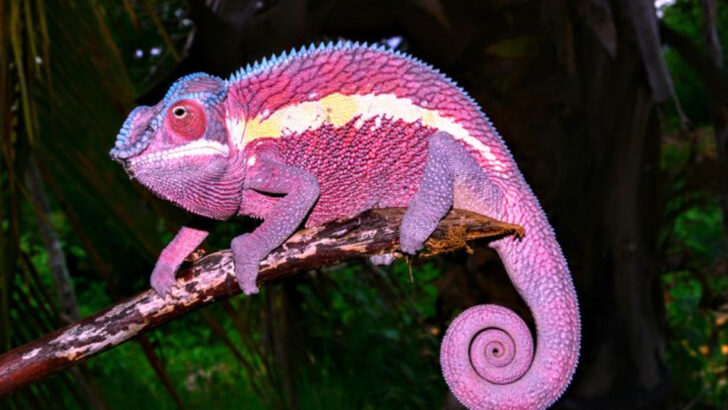Some animals don’t just survive—they show off while doing it.
With blazing colors, wild textures, and patterns that seem pulled from a fantasy novel, these creatures weren’t built to blend in. They’re bold, bizarre, and breathtaking—and they know it.
From neon sea slugs to birds dressed like royalty, these animals are living, breathing art. They don’t whisper “look at me.” They scream it. And somehow, they pull it off.
These 15 head-turners aren’t just pretty faces—they each carry a story that’s as fascinating as their looks. Let’s meet the showstoppers of the wild.
Mandarin Duck
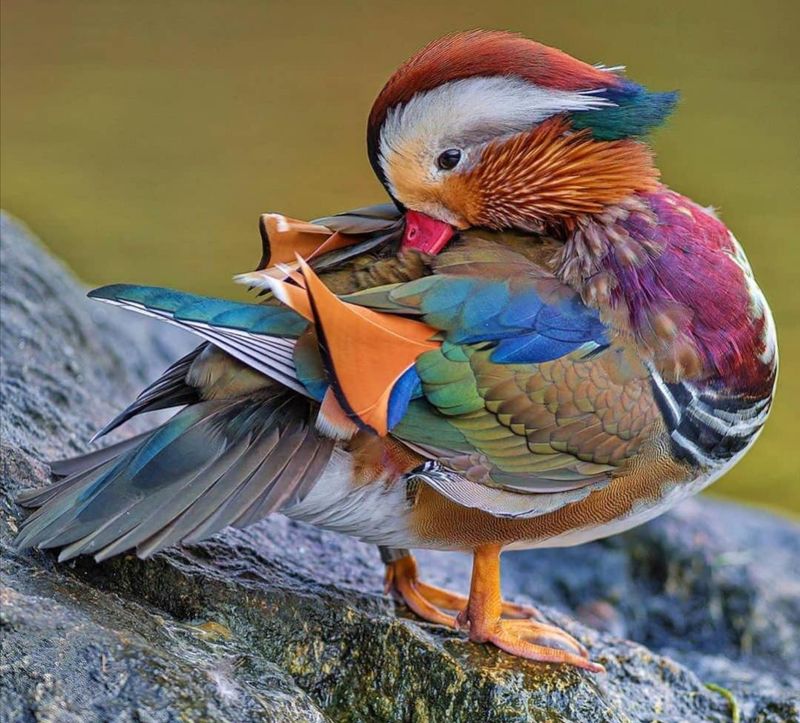
With its vivid plumage resembling a painter’s palette, the Mandarin Duck is a sight to behold. Found in East Asia, these birds boast a mix of orange, blue, green, and white feathers. Their striking appearance makes them a favorite among bird watchers.
During the breeding season, the males display their flamboyant colors to attract mates. Their beauty is matched only by their grace in water, gliding effortlessly across serene ponds.
Did you know? The Mandarin Duck holds cultural significance in China, symbolizing love and fidelity in marriage.
Peacock

Renowned for its dazzling tail, the Peacock is nature’s showstopper. The male’s iridescent plumage unfurls like a shimmering fan, adorned with eye-like patterns that mesmerize onlookers.
Native to India, Peacocks use their tails in elaborate courtship displays, captivating potential mates. Their vivid blues and greens are a marvel of evolutionary adaptation.
Interestingly, these birds are not just about looks; they play a significant role in their ecosystems, controlling insect populations.
Blue Poison Dart Frog
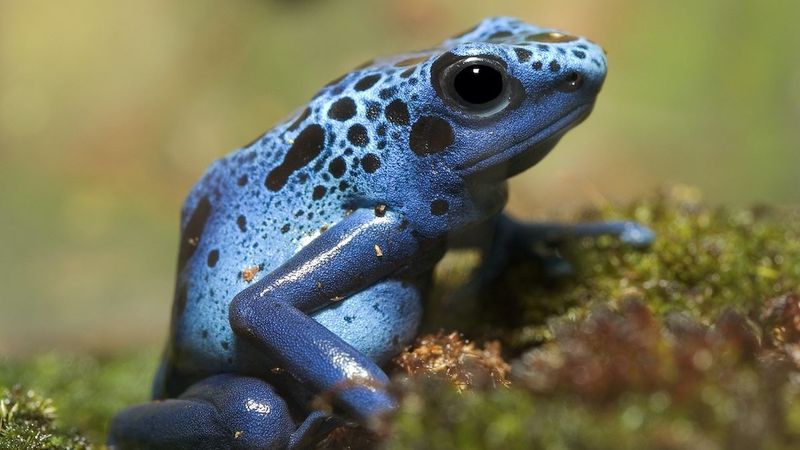
The Blue Poison Dart Frog’s vibrant hue serves as both a warning and a wonder. Found in the rainforests of South America, this tiny amphibian is famous for its striking blue color.
Its skin contains potent toxins, deterring predators from making it a meal. Despite their small size, they are formidable creatures in their habitat.
Their beauty belies their danger, making them one of nature’s most fascinating contradictions. Conservation efforts continue to protect these extraordinary frogs.
Chameleon
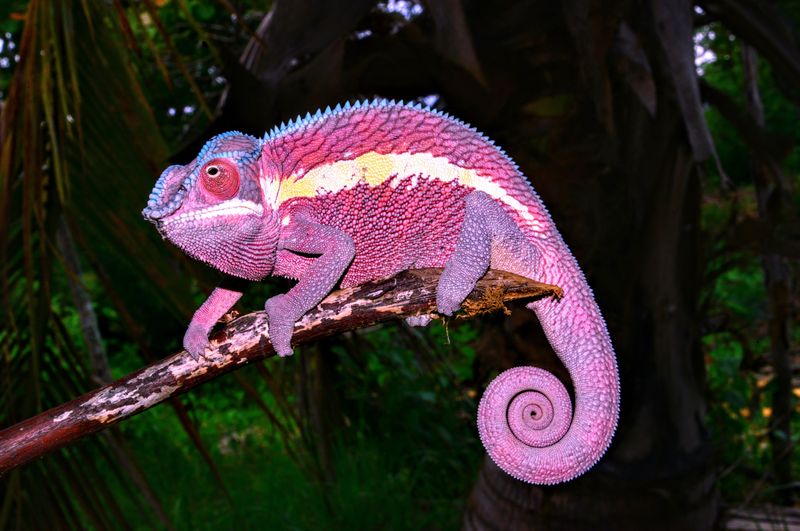
Chameleons are the masters of disguise, capable of changing colors to blend with their environment. Found in Madagascar and Africa, these reptiles possess an unparalleled ability to adapt.
Beyond their color-shifting talent, Chameleons are known for their independently moving eyes and rapid tongue strikes, making them proficient hunters.
Their color change is also a form of communication, conveying mood and condition, a truly fascinating aspect of their biology.
Mandrill
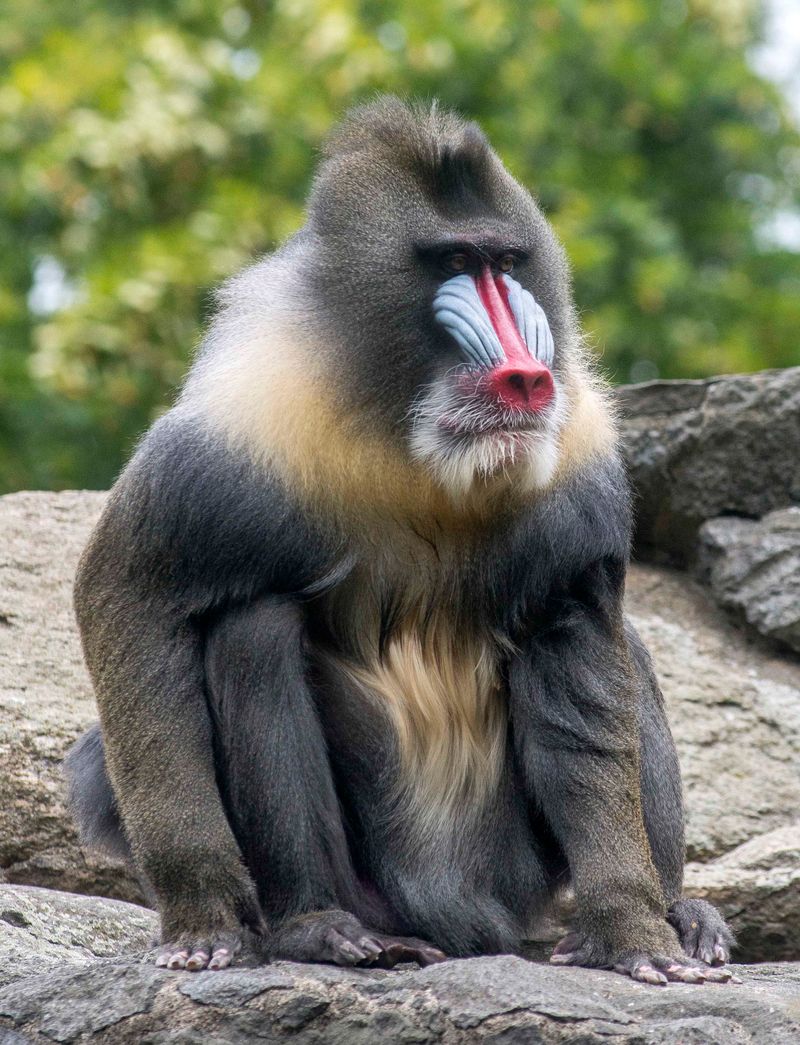
Mandrills are the picture of primate flamboyance, with vivid facial and posterior hues. These West African primates boast a blue and red snout complemented by a bright rear.
Their colorful appearance is not just for show; it plays a role in social signaling and mate attraction. In their complex societies, dominance is reflected in the brightness of their colors.
Despite their intimidating looks, Mandrills are shy and prefer the dense forests where they thrive.
Clownfish
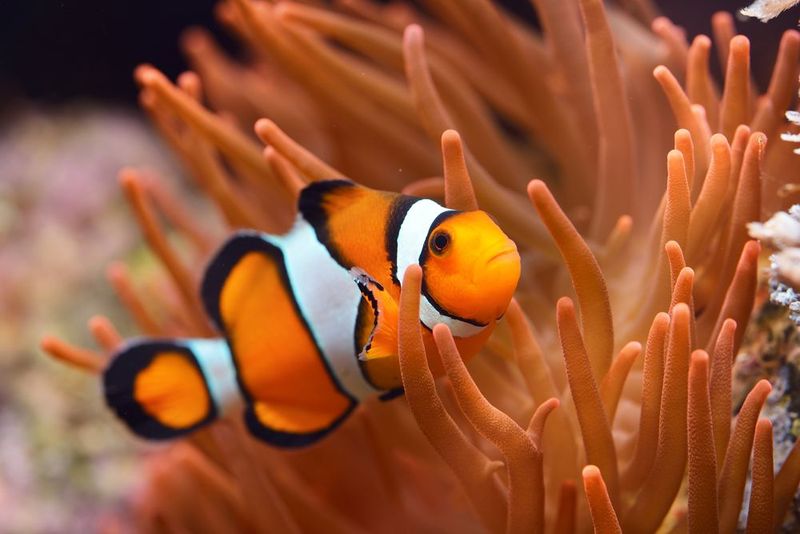
The Clownfish, with its bright orange and white stripes, is an icon of the coral reef. Popularized by films, these small fish are known for their symbiotic relationship with sea anemones.
Their bold colors serve as a deterrent to predators, while their unique habitat offers protection. Clownfish are protandrous hermaphrodites, capable of changing sex during their lifetime.
Their playful nature and colorful appearance make them a favorite among divers and marine enthusiasts.
Flamingo
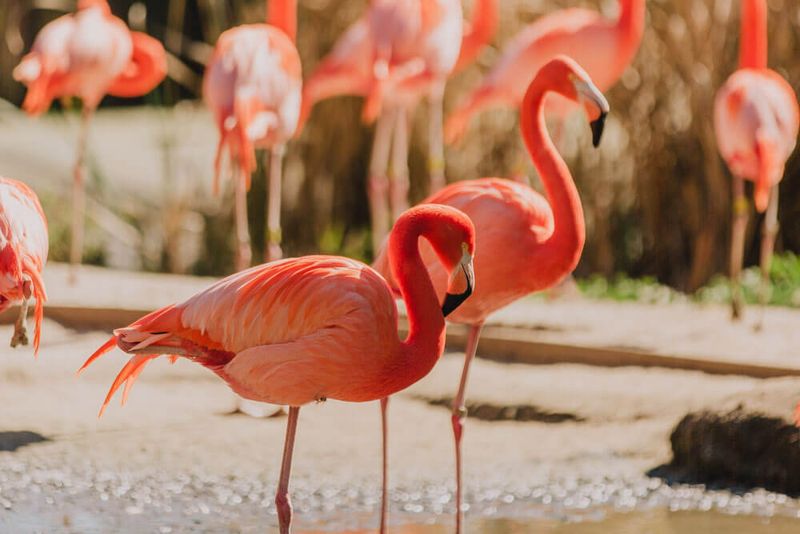
Standing tall and graceful, Flamingos are a spectacle of pink elegance. Found in warm, watery regions on many continents, their color comes from carotenoid pigments in their diet.
Flamingos are social birds, often seen in large flocks that create a sea of pink. Their unique feeding habits, filtering water for algae and crustaceans, add to their charm.
Their beauty and behavior have fascinated humans for centuries, symbolizing balance and grace.
Scarlet Macaw
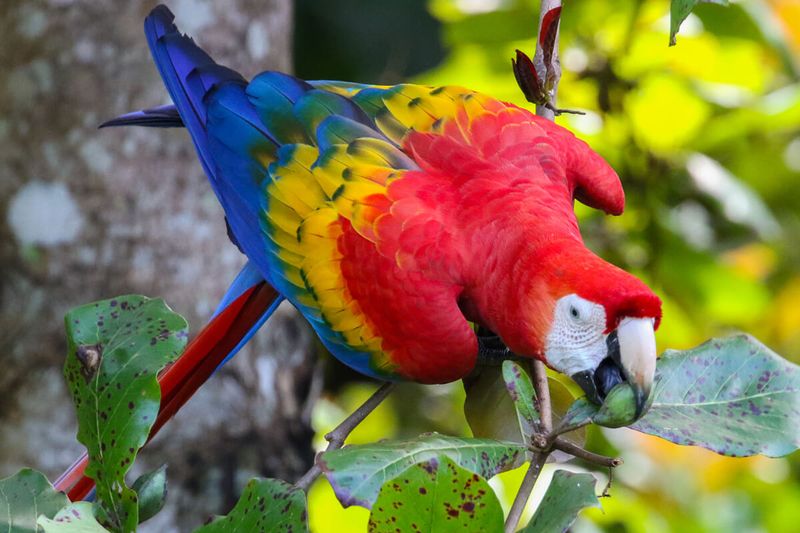
Scarlet Macaws are the jewels of the rainforest, flaunting vibrant red, yellow, and blue plumage. In the wild, these social parrots thrive in the canopy of Central and South America.
Known for their intelligence and long lifespan, Scarlet Macaws often form strong social bonds. Their striking colors help them blend into their lush habitats.
These birds are not just beautiful; they play a crucial role in seed dispersal, maintaining the health of their ecosystem.
Red-Eyed Tree Frog
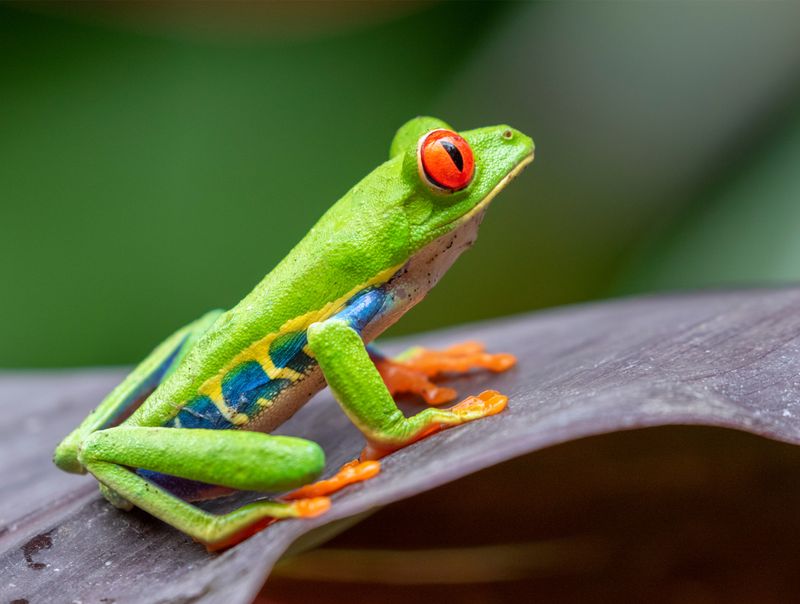
The Red-Eyed Tree Frog’s appearance is as striking as its name suggests. With vivid red eyes and a bright green body, it captures attention effortlessly.
Native to the rainforests of Central America, these frogs use their colors as a defense mechanism, startling predators when threatened. Their nocturnal lifestyle adds an element of mystery to their allure.
These amphibians are a reminder of the vibrant life that fills the rainforest canopies.
Lionfish
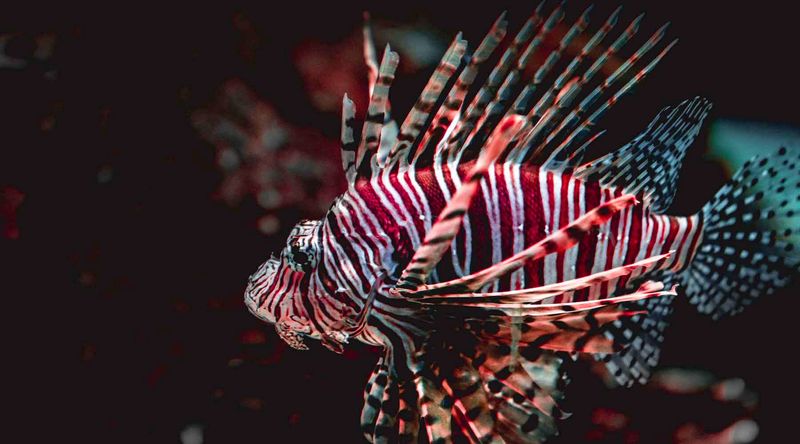
With its venomous spines and striking appearance, the Lionfish is both beautiful and dangerous. Found in the Indo-Pacific, its red, white, and black stripes make it a standout in any underwater setting.
Their invasive nature in non-native waters has caused ecological concerns, yet their allure remains undeniable. Lionfish are skillful hunters, often seen hovering with elegance.
Their presence in aquariums worldwide testifies to their captivating beauty despite their threat to reef ecosystems.
Butterflyfish
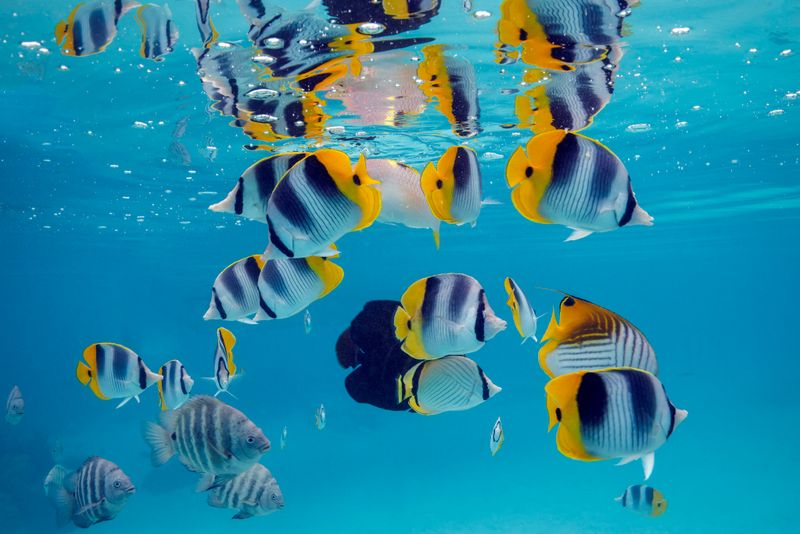
Butterflyfish are the artists of the sea, adorned with bright colors and intricate patterns. Found in the warm waters of the Atlantic, Pacific, and Indian Oceans, they grace coral reefs with elegance.
Their flattened bodies and small mouths are perfectly adapted for feeding on coral polyps. Often seen in pairs, Butterflyfish display strong bonds and complex social behaviors.
Their delicate patterns and vibrant hues make them a favorite among divers and marine photographers.
Harlequin Tuskfish
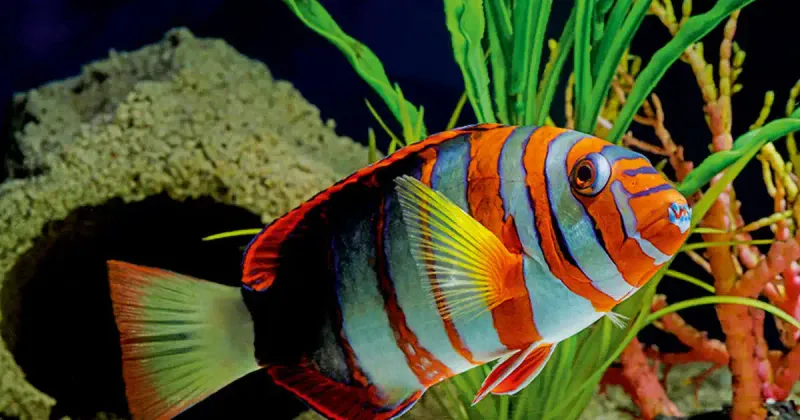
“Among the colorful inhabitants of the reef, the Harlequin Tuskfish is a true marvel. With its bold blue and orange stripes, this fish stands out against the backdrop of the ocean’s varied hues. Its sharp, tusk-like teeth add to its distinct appearance, making it a captivating sight under the water.
Unlike many of its aquatic comrades, the Harlequin Tuskfish is known for its inquisitive nature. Often seen exploring its surroundings, it navigates the coral reefs with a sense of curiosity that adds to its allure. This fish is not just visually striking but also exhibits a personality that’s hard to ignore.
Originating from the Indo-Pacific region, the Harlequin Tuskfish thrives in warm, tropical waters. Its habitat, nestled among coral reefs, provides it with ample opportunities to showcase its colors and charm. An encounter with this fish is sure to leave an indelible impression.”
Orchid Mantis
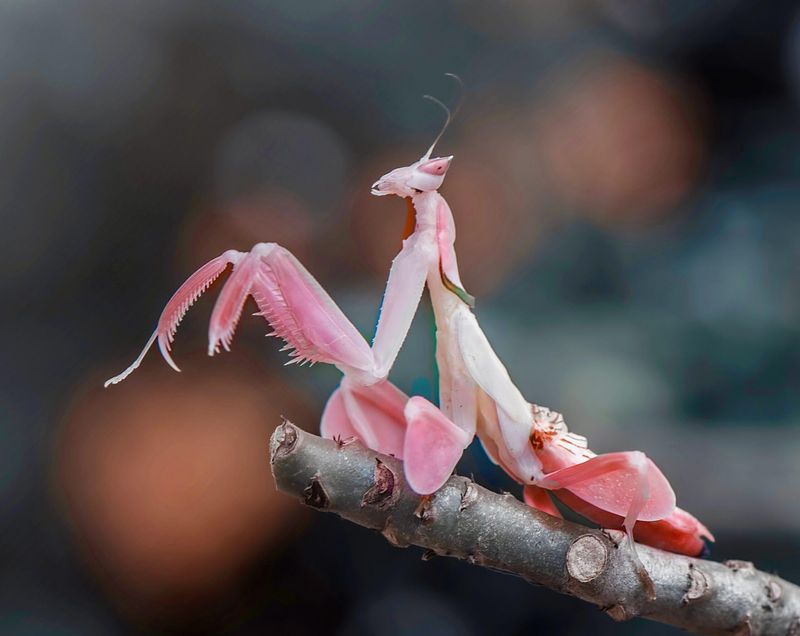
The Orchid Mantis is a master of mimicry, resembling a delicate flower to deceive prey and predators alike. Native to the rainforests of Southeast Asia, it is a true marvel of evolution.
Its body mimics orchid petals, allowing it to ambush unsuspecting insects. This strategy is as effective as it is beautiful.
Their ability to blend seamlessly into their surroundings highlights the intricate dance of predator and prey in nature’s balance.
Leafy Sea Dragon
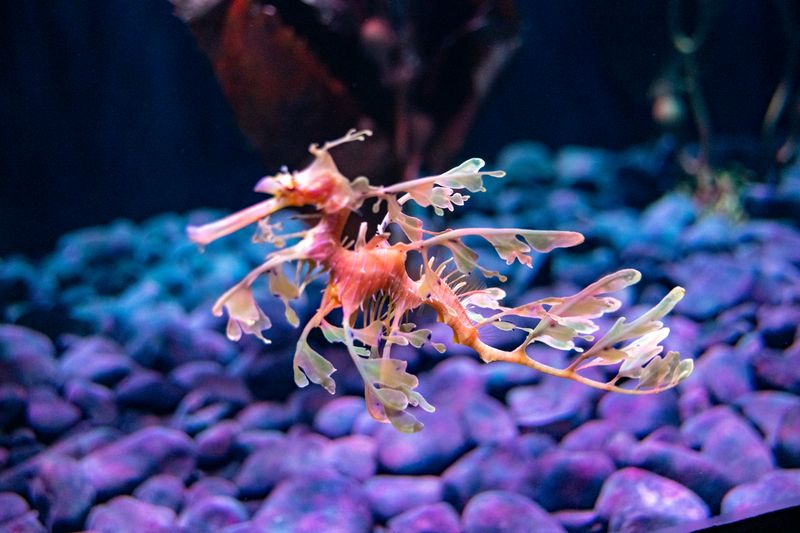
The Leafy Sea Dragon is an underwater spectacle, with appendages that resemble floating seaweed. Found along the southern and western coasts of Australia, they are masters of camouflage.
These creatures glide gracefully through their kelp habitats, their movements mimicking the ocean’s gentle sway. Their appearance provides both protection and allure.
Leafy Sea Dragons are a symbol of the ocean’s mystery and beauty, enchanting those fortunate enough to encounter them.
Resplendent Quetzal

Amidst the misty cloud forests of Central America, the Resplendent Quetzal reigns supreme with unparalleled beauty. Its iridescent green feathers shimmer like emeralds, while a vivid red belly adds a dramatic contrast.
The long, graceful tail feathers of the male, resembling a flowing green ribbon, are a sight to behold. This bird is not just a feast for the eyes; it holds cultural significance too. Ancient civilizations revered the Quetzal as a symbol of freedom and wealth.
Did you know? The name “Quetzal” is derived from the Nahuatl word for “precious” or “sacred.”

